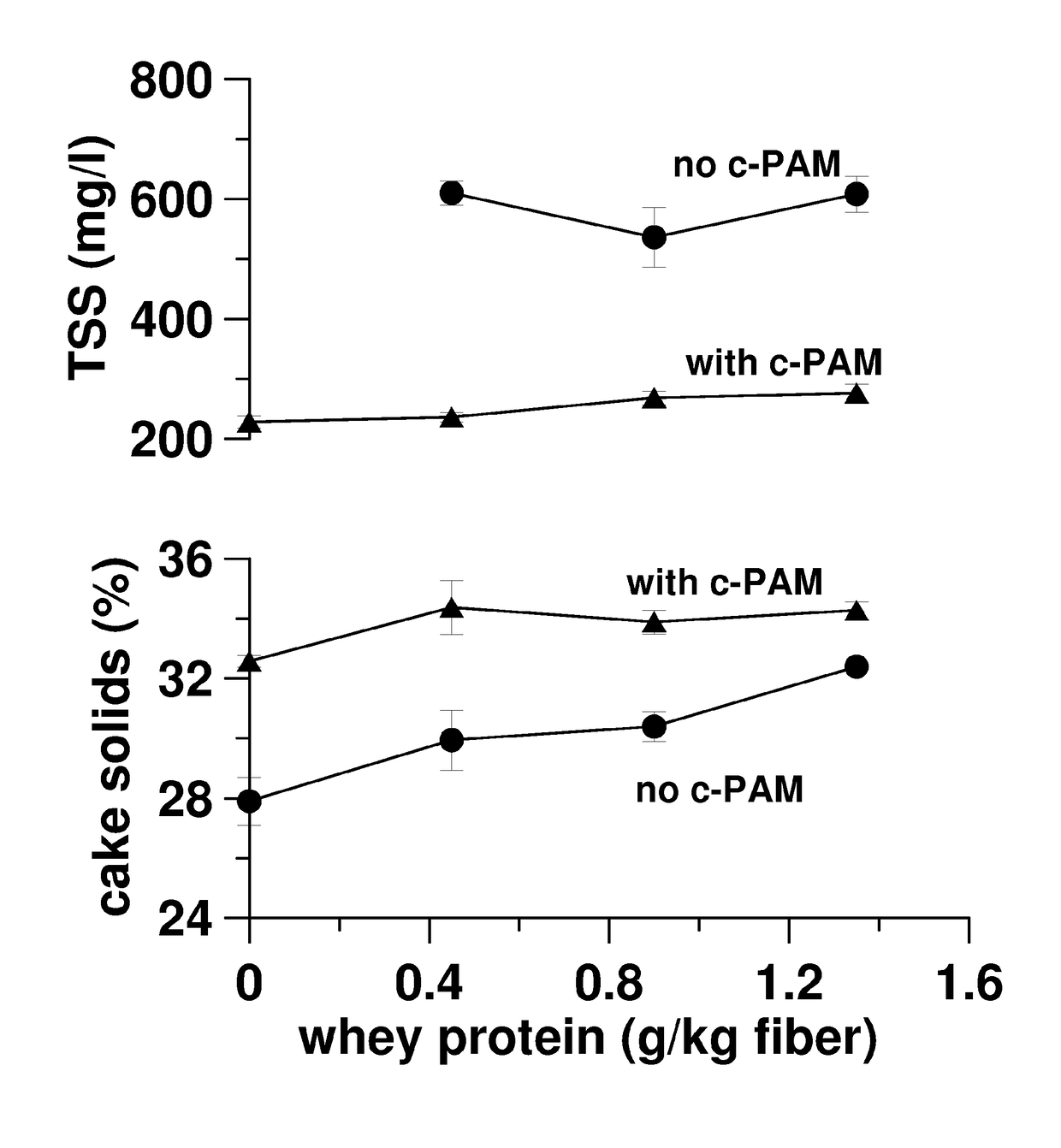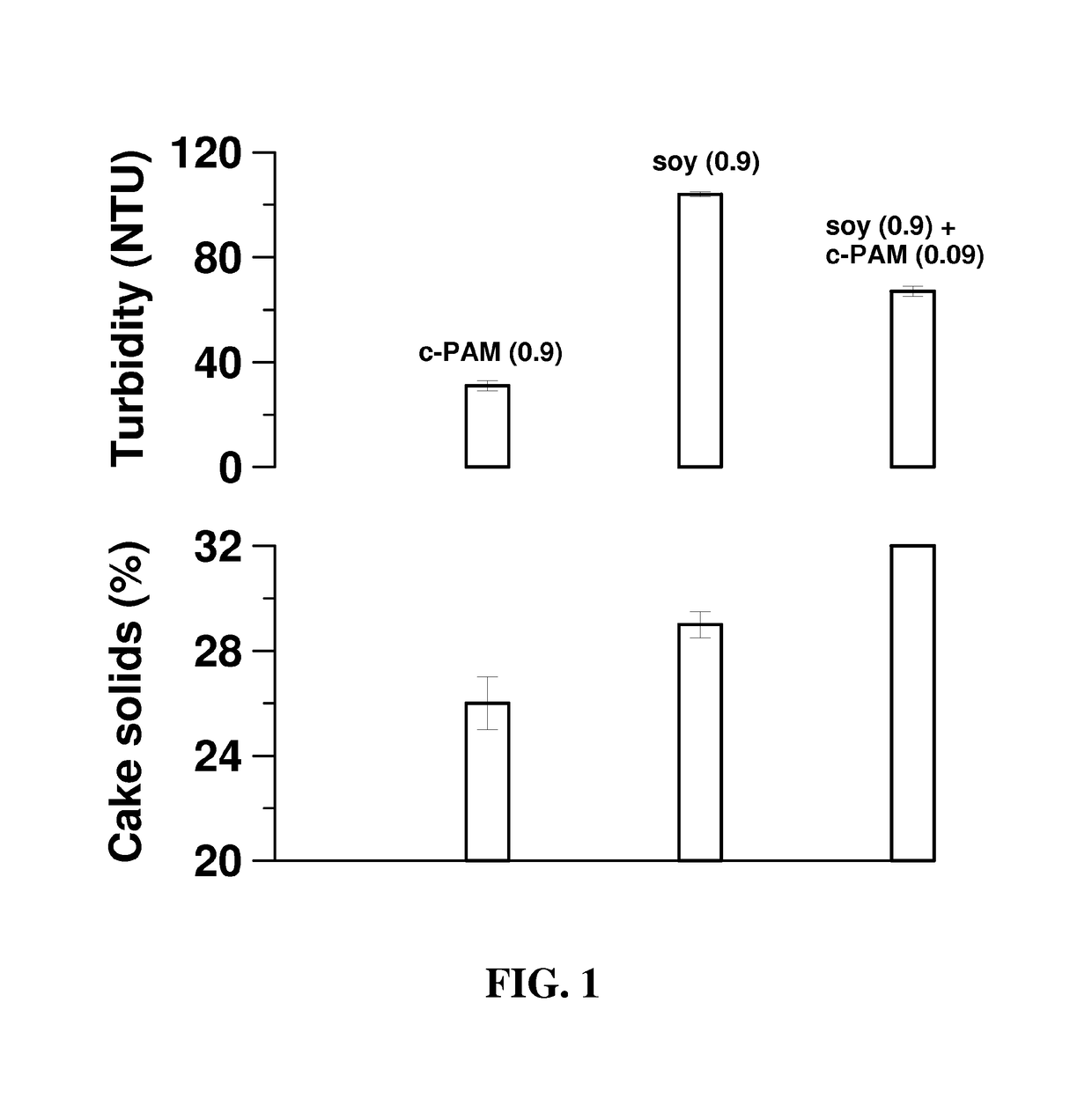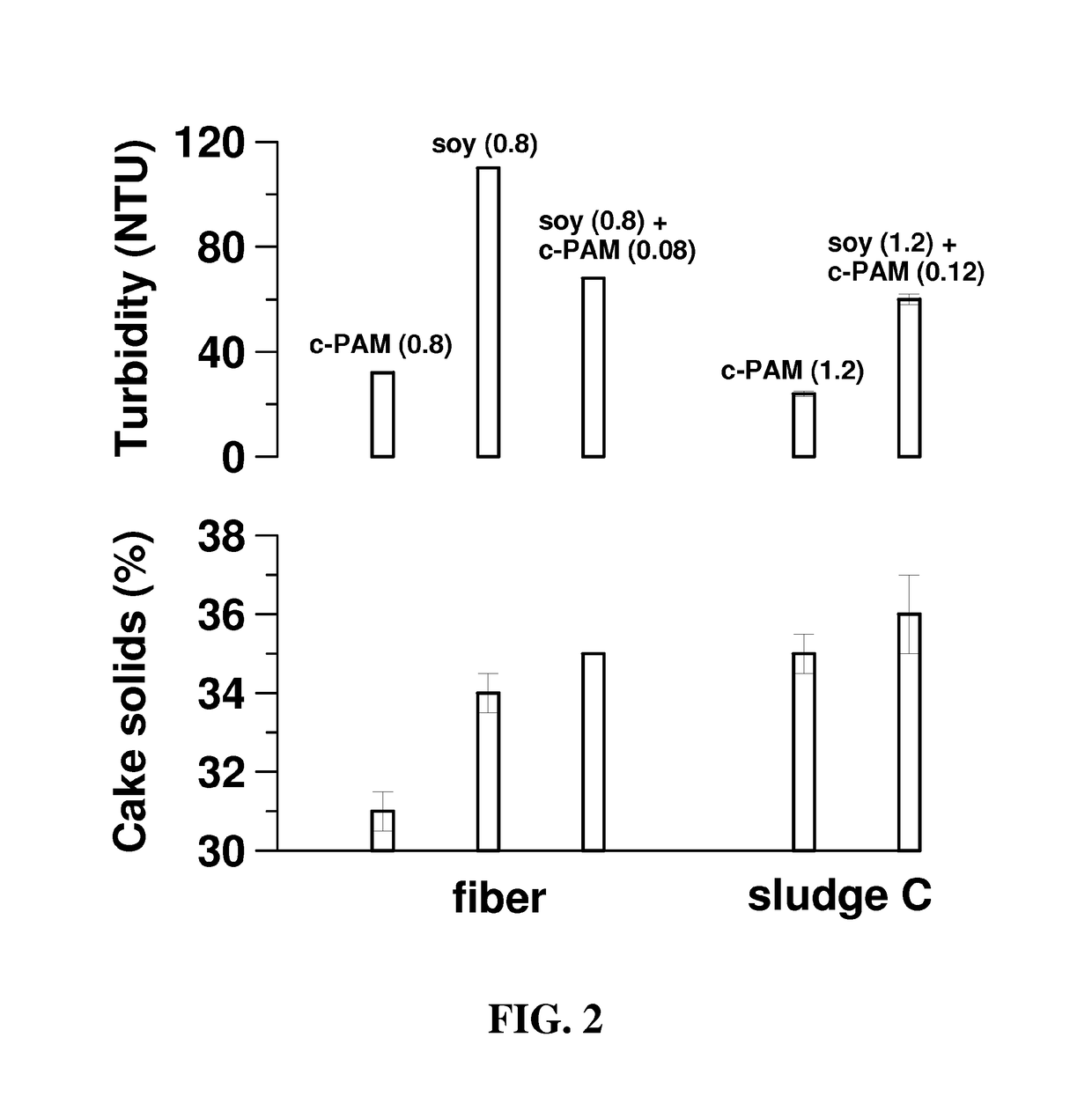Consolidation and dewatering of particulate matter with protein
a technology of protein and particulate matter, applied in the field of dewatering wet particulate matter, can solve the problems of inefficiency of dispersal, achieve the effects of increasing cake solids, promoting flocculation of particles, and promoting particle agglomeration
- Summary
- Abstract
- Description
- Claims
- Application Information
AI Technical Summary
Benefits of technology
Problems solved by technology
Method used
Image
Examples
example 1
[0043]Defatted soy flour was obtained from Archer Daniels Midland Co. Pro-Cote 4200 (a soy protein isolate) was provided by Solae. The c-PAM was provided by Eka Chemicals and had a molecular weight of 6.7 MDa and a nominal charge substitution of 40%. Bleached hardwood fiber was provided by the Alabama River Pulp Co.
[0044]A fiber suspension prepared at 2% solids was dewatered in a Crown press, which is known to simulate the performance of a belt filter press. Cake solids and turbidity results from dewatering hardwood fiber with Pro-Cote 4200 soy protein are presented in FIG. 1.
[0045]Higher cake solids are obtained with soy protein than with an equivalent concentration of the c-PAM. The turbidity is also higher with the soy protein. However, as seen in FIG. 1, the turbidity can be lowered with a small supplemental c-PAM dose. The supplemental c-PAM dose further increases cake solids to a level higher than that obtained with either c-PAM alone or soy protein alone.
[0046]It is thus clea...
example 2
[0047]Isolation of the soy protein from soy flour requires extraction and drying of the protein, which adds to cost. These costs could be minimized, if not eliminated, if the crude protein extract was added directly to the fiber slurry.
[0048]Crude soy protein was prepared by stirring a 20% suspension of defatted soy flour in pH 10 water for 2 hours at 55° C. The suspension formed a paste that was added directly without further purification to the slurry to be dewatered. The suspension was then dewatered in a Crown press.
[0049]The results, provided in TABLE 1, demonstrate that the crude soy protein extract leads to an increase in cake solids. The soy and the c-PAM provide the same cake solids when applied at the same dosage of 0.45 g / kg fiber, but it is advantageous to use the soy because it is lower in cost than the c-PAM.
[0050]
TABLE 1Dewatering bleached hardwood pulp suspension with crude soy protein (2% solids in water).SuspensionCake Solids (%) n = 2fiber only27.9 ± 0.8 fiber + 0...
example 3
[0051]Sludge was obtained from several paper mills, which properties are listed in TABLE 2. Results from dewatering three paper mill sludges with crude soy protein (prepared as described in Example 2) are compiled in TABLE 3.
[0052]For mill B sludge the soy / c-PAM combination provides the same cake solids as the c-PAM alone, but at a much lower c-PAM dose. The crude soy additive greatly increases cake solids for Mill P. The results for Mill W sludge are similar to those obtained for Mill B in that the soy protein reduces the c-PAM dose.
[0053]It is evident that the results obtained in Examples 1 and 2 with fiber also apply to a variety of paper mill sludges.
[0054]
TABLE 2Properties of paper mill sludge.SludgeSourceCrecycled bleached kraft pulpBbleached kraft pulp (mixture of fiber and biological sludge)Pbleached kraft pulpWbleached kraft pulp (mixture of fiber and biological sludge)
[0055]
TABLE 3Dewatering sludge with crude soy protein.AdditiveCake Solids (%)TSS1 (mg / l)Mill BNone26 ± 15,...
PUM
| Property | Measurement | Unit |
|---|---|---|
| concentration | aaaaa | aaaaa |
| concentration | aaaaa | aaaaa |
| water content | aaaaa | aaaaa |
Abstract
Description
Claims
Application Information
 Login to View More
Login to View More - R&D
- Intellectual Property
- Life Sciences
- Materials
- Tech Scout
- Unparalleled Data Quality
- Higher Quality Content
- 60% Fewer Hallucinations
Browse by: Latest US Patents, China's latest patents, Technical Efficacy Thesaurus, Application Domain, Technology Topic, Popular Technical Reports.
© 2025 PatSnap. All rights reserved.Legal|Privacy policy|Modern Slavery Act Transparency Statement|Sitemap|About US| Contact US: help@patsnap.com



